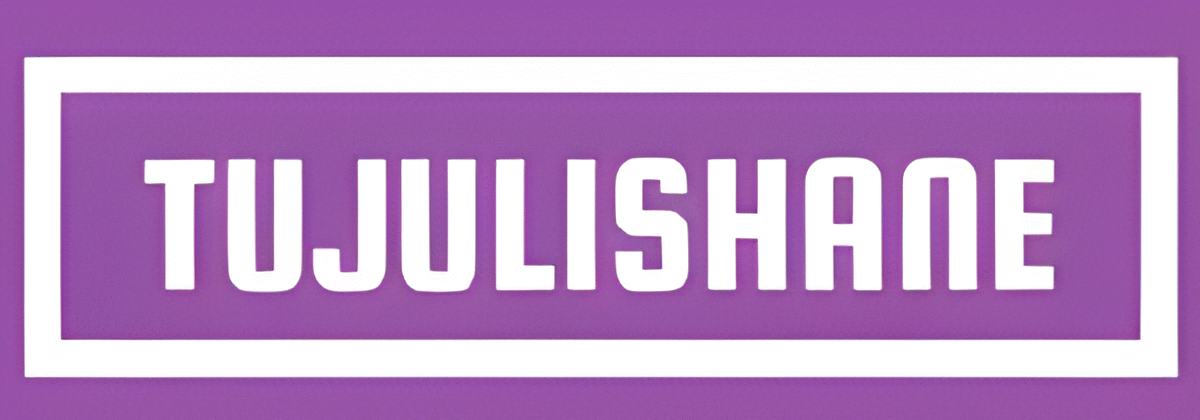What Life Lessons Can “Time Heals All Wounds” Teach Us?
In life, we all experience pain and heartbreak at one point or another. It’s inevitable, and it can feel overwhelming. But have you ever heard the saying, “Time heals all wounds”? This simple phrase holds a powerful lesson for us all. It teaches us that no matter how much we may be hurting in the moment, time has a way of helping us heal and move forward. It reminds us that although pain may be temporary, the resilience and strength we gain from overcoming it can last a lifetime. So let’s explore the valuable life lessons that this timeless adage can teach us.

The Meaning of the Phrase
Origins of the phrase
The phrase “time heals all wounds” is believed to have originated from the Latin phrase “tempus omnia sanat,” which translates to “time heals all things.” While the exact origin is uncertain, the sentiment behind the phrase has been expressed in various cultures throughout history. It reflects the belief that with the passage of time, emotional and physical pain will gradually fade and heal.
Interpreting the phrase
Interpreting the phrase “time heals all wounds” requires understanding its broader meaning and implications. It suggests that time has the power to bring about healing and alleviate the pain caused by personal losses, heartbreak, or traumatic experiences. However, it is essential to recognize that healing is a complex and individual process influenced by various factors such as the nature of the wound, personal resilience, and external support systems.
The Concept of Healing
Understanding the healing process
Healing, in its essence, refers to the restoration of balance and well-being after experiencing pain or trauma. It encompasses both physical and emotional aspects, highlighting the interconnectedness of the body and mind. The healing process involves a series of psychological and physiological responses aimed at repairing and regenerating damaged tissues and resolving emotional distress.
Physical vs Emotional healing
Physical healing primarily focuses on the body’s recovery from injuries, illnesses, or surgeries. This process often involves medical interventions, such as medications, surgeries, and rehabilitation programs, to promote tissue repair and restore bodily functions. On the other hand, emotional healing addresses the psychological, and sometimes spiritual, aspects of wounds. It requires introspection, emotional processing, and may involve therapy or self-help techniques to facilitate the alleviation of emotional pain.
Different approaches to healing
There are multiple approaches to healing, each influenced by personal beliefs, cultural norms, and individual preferences. Some individuals may seek holistic methods, including alternative therapies like acupuncture and meditation, to restore their well-being. Others may choose conventional medical interventions or a combination of both. It is essential to respect individual choices and find an approach to healing that resonates with your personal values and needs.
Acceptance and Moving On
Acknowledging pain and loss
The first step in the healing journey is acknowledging and accepting the pain and loss you have experienced. It is natural to feel a sense of grief, sadness, or anger when faced with challenging circumstances. By allowing yourself to fully experience and express these emotions, you open the door to healing and provide yourself space for growth and self-compassion.
Finding closure
Closure is an essential aspect of healing. It involves finding a sense of resolution or completion in relation to a painful event or loss. Closure does not necessarily mean forgetting or erasing the past but rather finding a way to make peace with it. This may involve seeking closure through conversation, journaling, or engaging in rituals or ceremonies that honor the experience or person you have lost.
Letting go of resentment
Resentment can be a significant barrier to healing. Holding onto bitterness and resentment only prolongs the emotional pain and prevents personal growth. By practicing forgiveness and letting go of grudges, you free yourself from the burden of negative emotions and create space for healing and transformation. It is important to remember that forgiveness does not imply condoning or forgetting the actions that caused the pain but rather freeing yourself from its grip.
Gaining Perspective
Time as a catalyst for reflection
As time passes, it provides an opportunity for reflection and introspection. It allows us to gain a fresh perspective on past experiences and evaluate their impact on our lives. The distance created by time can help us to see things more objectively and enable personal growth and wisdom as we navigate through life’s challenges.
Finding meaning in difficult experiences
Difficult experiences often carry valuable life lessons. When wounds are still fresh, it can be challenging to see beyond the pain and find meaning in the suffering. However, as time passes, we may gain insights into the growth and resilience that have emerged from those experiences. By embracing the lessons learned and incorporating them into our lives, we can transform pain into personal growth and find renewed purpose.
Embracing Change
Adapting to new circumstances
Healing often involves adapting to new circumstances. Life is constantly evolving, and the ability to embrace change is crucial for personal growth and healing. Resisting change can hinder the healing process and prolong emotional distress. By accepting and adapting to new circumstances, you can navigate through life’s challenges with greater resilience and inner strength.
Learning from past mistakes
Time also offers an opportunity for self-reflection and learning from past mistakes. Through introspection and honest self-assessment, you can identify patterns, behaviors, or choices that may have contributed to your wounds. By acknowledging these mistakes and committing to personal growth and self-improvement, you can break free from negative cycles and embrace a more positive future.
Staying open to growth
Healing involves an ongoing commitment to personal growth and development. By staying open to new experiences, relationships, and opportunities, you expand your horizons and cultivate resilience. Embracing change and stepping outside of your comfort zone can lead to transformative experiences and propel you forward on your healing journey.
Building Resilience
Developing coping mechanisms
Resilience refers to the ability to bounce back from adversity and adapt to life’s challenges. Building resilience involves developing effective coping mechanisms and support networks. These coping mechanisms can include engaging in activities that promote relaxation and self-care, seeking emotional support from loved ones or professionals, and maintaining a positive mindset. By nurturing resilience, you can navigate through difficult times with grace and strength.
Finding strength in adversity
Adversity often brings forth hidden strengths and resources we never knew we possessed. While pain and wounds can be harrowing, they also provide an opportunity for personal growth and the discovery of inner resilience. By embracing the challenges, acknowledging your own strengths, and facing adversity head-on, you can transform wounds into sources of personal strength and empowerment.
Utilizing support networks
During the healing process, it is essential to recognize and utilize the support networks available to you. Friends, family, support groups, or professional therapists can provide invaluable emotional support, guidance, and understanding. By leaning on these networks, you can alleviate the burden of pain and forge meaningful connections that contribute to your healing journey.
The Importance of Patience
Understanding the timeline of healing
Healing takes time, and it is essential to recognize that everyone’s healing timeline is different. While some wounds may heal quickly, others may require more time and patience. It is important to be gentle with yourself and set realistic expectations for your healing journey. Remember that healing is not a linear process and that setbacks and ups and downs are a natural part of the journey.
Practicing self-compassion
Self-compassion is a vital component of the healing process. Treat yourself with the same kindness, understanding, and forgiveness that you would offer to a close friend. Allow yourself the space and time needed for healing without judgment or self-criticism. By cultivating self-compassion, you provide yourself with the support and nurturance needed to navigate through challenging times.
Maintaining perseverance
Healing is a journey that requires perseverance and determination. There may be moments when you feel discouraged or overwhelmed, but it is crucial to keep moving forward. By maintaining a sense of purpose and resilience, you can overcome obstacles and continue on your path towards healing. Remember that healing is possible, and with time, you will find the strength and inner resources to overcome life’s wounds.
Forgiveness and Compassion
Letting go of grudges
Forgiveness is a transformative act that involves letting go of grudges and resentments. Holding onto anger and blame only hinders the healing process and keeps you emotionally tied to the pain caused by others. By practicing forgiveness, you free yourself from negative emotions and open the door to healing and personal growth. Forgiveness does not imply forgetting or condoning the actions that caused the pain but rather releasing yourself from their grip.
Showing empathy towards oneself and others
Compassion, both towards oneself and others, plays a profound role in the healing process. It involves acknowledging the pain and suffering experienced by yourself and others with kindness, understanding, and empathy. By cultivating compassion, you create an environment of healing and growth where wounds can be gently tended to and transformed into sources of strength and resilience.
Healing through forgiveness
Forgiveness can be a powerful catalyst for healing. When you forgive, you release yourself from the emotional burden of holding onto grudges and resentments. This act of forgiveness allows for emotional healing, reestablishing inner peace, and promoting personal growth. By embracing forgiveness, you consciously choose healing and liberation from the wounds of the past.
Finding Meaning in Loss
Navigating grief and bereavement
Experiencing loss and grief is an inevitable part of life. Healing from loss involves navigating the journey of grief and finding ways to honor and remember loved ones. It is important to allow yourself to grieve and seek support from others who have experienced similar losses. Through this process, you can ultimately find meaning and purpose in the midst of pain and transform your grief into healing and growth.
Seeking purpose in difficult times
Difficult experiences and losses can offer an opportunity to reflect on life’s purpose and meaning. During times of healing, it is natural to question the meaning of one’s existence and seek a deeper understanding of oneself and the world. By embracing these questions and seeking personal growth and self-discovery, you can find renewed purpose and direction in life.
Transforming pain into growth
Grief and loss have the potential to become catalysts for personal growth and transformation. By embracing the pain and learning from the lessons it offers, you can find the strength to heal and grow. Through self-reflection, emotional processing, and seeking support, you can navigate through difficult times and emerge stronger, wiser, and with a renewed sense of purpose.
The Role of Time
The impact of time on healing
Time plays a significant role in the healing process. As time passes, wounds gradually heal, emotional pain subsides, and new perspectives emerge. Time allows for the integration of experiences, the cultivation of resilience, and the gradual restoration of balance and well-being. While time alone may not heal all wounds, it provides a nurturing environment for healing to take place.
Understanding the limits of time
While time is an essential element in the healing process, it is important to acknowledge its limits. Some wounds may require professional intervention, therapy, or specialized support beyond what time alone can provide. Recognizing when additional help is needed is a sign of strength and a commitment to your own healing journey.
Making the most of the present
While healing involves acknowledging the past and its impact, it is essential to make the most of the present moment. Embracing the present allows for the cultivation of gratitude, joy, and resilience. By focusing on the here and now, you can create opportunities for healing, growth, and meaningful connections that contribute to your overall well-being.
In conclusion, the phrase “time heals all wounds” holds valuable insights into the healing journey. While time plays a crucial role in the healing process, it is important to recognize that healing is a complex and individual experience. By acknowledging pain, finding closure, embracing change, building resilience, practicing patience, and cultivating forgiveness and compassion, you can harness the power of time to embark on a transformative healing journey. Through self-reflection, seeking support, and finding meaning in difficult experiences, wounds can be transformed into sources of strength, growth, and personal empowerment. Remember that healing is a unique and ongoing process, and with time, patience, and self-compassion, you can find solace, growth, and a renewed sense of purpose.







